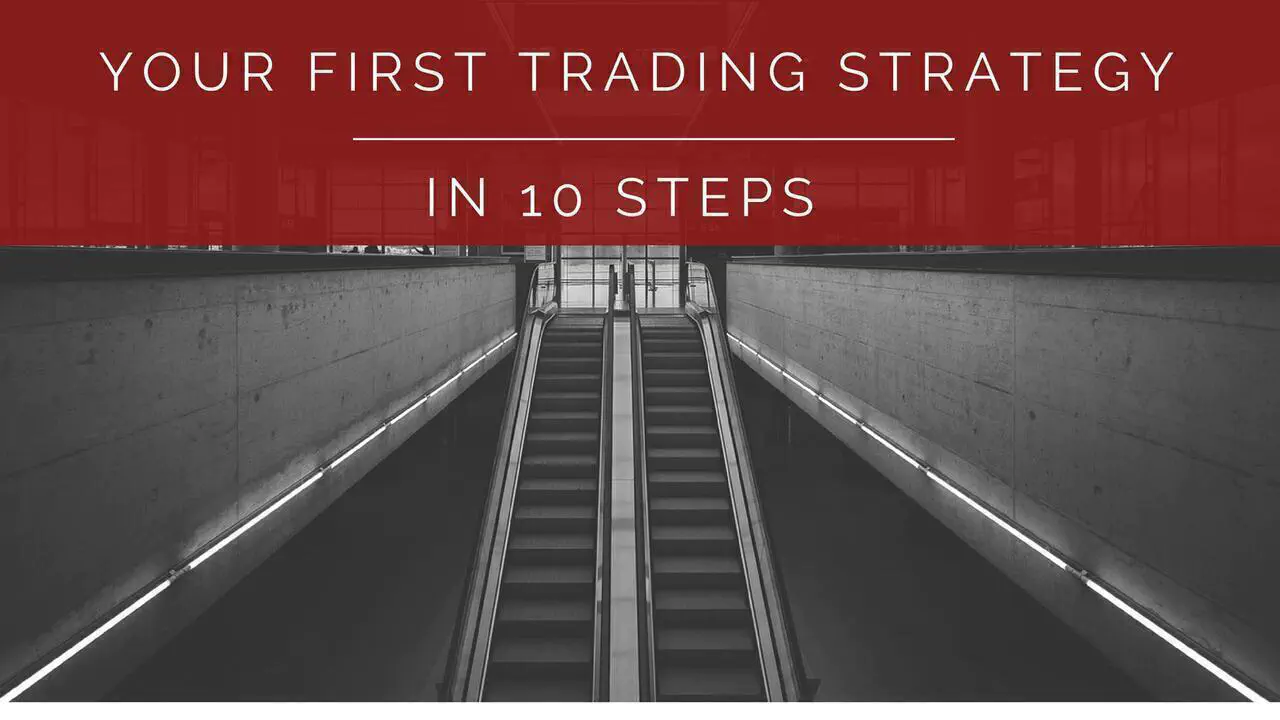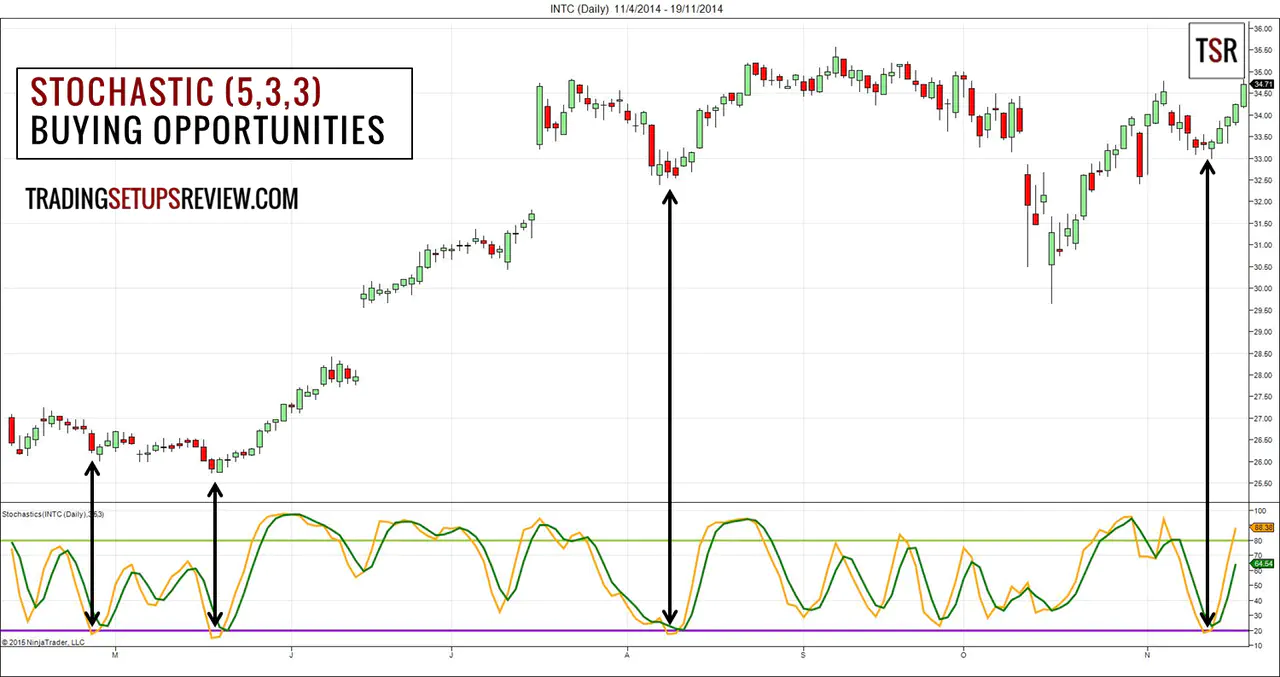10 Steps To Creating Your First Trading Strategy
By Galen Woods ‐ 6 min read
Create a solid first trading strategy with a step-by-step guide. With these 10 simple steps, you can launch your trading career with a good foundation.

Most new traders start by learning the trading strategies of other traders. I began my trading career this way as well. But, many traders ask, how do I get started with my trading strategy?
The good news: Creating your first trading strategy is easy.
The bad news: Creating a profitable trading strategy is hard.
Start with the right expectations. Forming a trading strategy is easy. Learn a few trading tools and indicators, and you can do it.
However, it’s not realistic to think that your first trading strategy will make you rich.
Finding an objective trading edge is tough. On top of that, you’ll realise that trading profitably goes beyond your trading strategy.
Then why should you still form your trading strategy? Why not just use the trading strategy of a successful trader?
Traders might share their tools and approaches. But no trader can or will guarantee your profits. Every trader is different. Hence, you can only benefit from a unique and personal blend of trading tools.
The best and most sustainable approach is to develop your trading strategy.
Follow these 10 steps to forming your first trading strategy:
Step 1: Form Your Market Ideology
Before you jump into creating your own trading strategy, you must develop an idea of how the market works. Most importantly, you need to answer this question.
Why do you think you can make money from the markets?
Form your market ideology by reading widely. Read about both technical and fundamental analysis.
Avoid get-rich-quick claims.
Think about demand and supply.
Doubt theories that claim that people are perfectly rational.
Your ideology will define every step that follows. Give it the attention it deserves.
Regardless, I urge you to follow one principle in your first trading strategy.
Keep it as simple as possible.
You don’t want to be overwhelmed by a complex strategy right from the start. Moreover, a trading strategy with more moving parts is harder to manage and improve.
Step 2: Choose a Market For Your Trading Strategy
Forex? Equities? Options? Futures?
If you choose to trade forex, understand what you are buying and selling with a currency quote. Make sure you learn about the different models of forex brokers. Know how the margin is calculated.
Or if you choose to trade equities, you must know what a share means. You must know the difference between a blue-chip and a penny stock.
The point is there’s a lot to learn about each market. But you cannot start to learn in-depth until you choose your trading market.
Although I recommend futures trading for intraday traders, the choice is yours. The only rule is that you must understand the market you choose to trade.
Step 3: Choose A Trading Time Frame
Before you gain any trading experience, it’s hard to decide on a trading time frame. You will not know if you are more suited to quick scalping or daily swing trading.
Should you trade the 5-minute time frame or the daily charts?
Hence, you can start by considering your circumstances. If you have time to watch the market for extended periods, try intraday trading.
When you trade fast time frames, you get fast feedback to shorten your learning time. Even if you end up with longer timeframes, what you learn from intraday price action will still be useful.
Of course, if you are not able to watch the market for extended periods, start with end-of-day charts. With sustained effort, you can learn enough to decide if swing trading is for you.

Step 4: Choose A Tool To Determine The Trend (Or Lack Of)
You don’t trade when you see a Pin Bar. You trade when the market is rising, and you use a bullish Pin Bar to trigger your trade.
You don’t trade when you see a Gimmee Bar. You trade when you judge that the market is going sideways, and you use a Gimmee Bar to enter the market.
Decide on a tool to help you judge the market context. (i.e. trending or not, up or down)
You can choose price action tools like swing pivots and trend lines. You can also use technical indicators like moving averages and MACD.
Step 5: Define Your Entry Trigger
Even with the right market context, you need an objective entry trigger. It will help you enter the market without hesitation.
Both bar and candlestick patterns are useful triggers. If you prefer indicators, oscillators like the RSI and stochastics are good options too.
Step 6: Plan Your Exit Trigger
You need to plan how to exit when things go wrong. The market can go against you, causing you losses beyond your imagination. Having a stop-loss is critical.
Learn how to place a stop-loss here.
You also need to plan how to exit when things go your way. The market will not go your way forever. Hence, you need to know when to take profits.
Learn how to place a target here.
Step 7: Define Your Risk
Once you have your entry and exit rules sorted out, you can work on limiting risk.
The primary way to do so is by position sizing. For a given trading setup, your position size determines how much money you are putting on the line.
Double your position size, and you will double your risk. Watch your position size carefully.
Step 8: Write Down Your Trading Rules
At this stage, your trading strategy is simple. You might be able to memorise the trading rules. However, you must still write down your trading rules.
Having a written trading plan is a robust method to ensure discipline and consistency.
It also provides a record of your trading strategy. You will find it useful when you are trying to refine it.
Step 9: Backtest Your Trading Strategy
With your written rules, you can now backtest the strategy.
If you have a discretionary trading strategy, backtesting can be an arduous process. You need to replay the market price action and record your trades manually.
If you have a mechanical trading strategy and a coding background, you can speed up this stage.
Nonetheless, looking through the trades one by one is a great way to develop your market instinct. Doing so can also help you think of ways to improve your trading strategy.
Step 10: Plan How To Improve Your Trading Strategy
Your first trading strategy will not be profitable. But it’s okay. Your trading strategy is a living object. It is not static.
With your growing experience and knowledge, your trading strategy will improve.
But let’s not leave this to chance. Plan how you will obtain feedback and improve your trading strategy.
Forward test your trading strategy. Plan to take good notes of your market observations. Record your trades and keep your chart images in good order.
Avoid drastic changes to your trading strategy.
For this final step (which might take forever), remember that your aim is to achieve positive expectancy with every trade. Not positive profits for each trade.
Let statistics work for you. Don’t force your will on the market.
Conclusion
Follow the 10 steps above, and you will find yourself with a basic trading strategy.
This strategy is not the Holy Grail. But it is formed with your experience and according to your trading style.
Keep working on it, and you will stand a chance to succeed.
